Nepalese festivals
Bada Dashain:
Bada Dashain, usually falls in the month of September- October, is the greatest Hindu festival of Nepal. The festival continues for 15 days. It is also called Durga Pooja as the festival is celebrated to commemorate the slying of demon Mahisasur by goddess Durga. The first day of the festival is called Ghatasthapana when a sacred jar with holy water is installed in each Nepalese house and barley seeds are sowed in the sand. The seventh day is called Fulpati, when a bunch of ginger stalks, banana leaf, sugarcane and seasonal flowers is introduced in the Daishan Ghar. the eighth day of the festival is called Mahaastami and it is the day of great sacrifice. The 10th day of the festival, Vijaya Dashami, is the major day of the festival when people take Tika and Jamara from their elders and relatives. The festival ends on the day of Kojagrat Poornima.
Deepawali (Tihar):
Deepawali, or the festival of lights, is the second biggest Hindu festival of Nepal. The festival is celebrated for five days and crow, dog, cow and oxen are celebrated on separate days. The Laxmi Pooja, which falls on the third day of the festival, is the major attraction of the festival. People illuminate their houses and surroundings with colourful lights and Bhailo singers wish for the prosperity of people. Laxmi, the goddess of wealth, is worship their brothers and wish for their progress and the prosperity.
Sreepanchami (Saraswati pooja):
Shreepanchami, the festival devoted to Goddes Saraswoti ( the goddess of learning)is observed in January-February throughout Nepal. The festival is celebrated by worshipingthe goddess at different temples across the country . The day is also known as Basanta Panchami and the denotes the beginning of spring season. Parents start formal education of their children from this very day.
Lhosar:
Maghe Shakranti:
Maghe Shakranti is the festival devoted to lord Vishnu. it fails on the month of Magh when sun enters the southern hemisohere and the day begins to grow longer and warmwer. On this day people take an early morning in a holy river, visit temples of Vishnu. People read Bhagwat Gita, apply mustard oil over their bodies and enjoy the feast of rice cooked with lentils, yams, sweets made of sesame and jaggery.
Maha Shivaratri:
Maha Shivaratri is the festival devoted to Lord Shiva. The festival usually falls on the month of February. People throng to the temples dedicated to Lord Shiva throught the country.They fast for the whole day and worship Lord Shiva wishing for the well-being and prosperity of themselves and their family members. A great fair is organised at the Pashupatinath temple, lying on the bank of holy Bagmati river, on this day. Hundreds of thousands of devotees from around the country and different parts of India come to the temple permises to offer worship to Lord Shiva. Sages and Sadhus from India and Nepal add extra charm to this festival. nepal Army also observe a special military parade as the Maha Shivaratri also coincides as the Army Day.
National Democracy Day:
National Democracy Day is celebrate on the 7th of Falgun, usuallyon the third week of February. People and the ruler King Tribhuvan united to topple the autocracy regime on this very day in 2007 BS. It was the day when democracy was first institutionalised in the country. A government holiday is declared for this day and people celebrate the day by paying tribute to known and unknown Martyrs. A special function is organised to mark the day in Army Pavilion, Tundikhel.
Fagu Purnima (Holi):
Fagu Purnima or Holi is one of Nepal's most colourful festival. It is the festival of colour and people semer diffrent colours to their friends and family members to celebrate this day. The day signifies the demolition of demoness Holika by Lord Bishnu. The eighth-day festival formally begins with the erection of a ceremonial pole at the Kathmandu Durbar Square. People also through water-filled balloons to their friends and strangers as a part of celebrating this festival. The people in The Tarai celebrate the festival the following day. The festival usually falls in the month of March.
Chaite Dashain:
Chaite Dashain is One of the two Dashain celebrated by Hindus. The festival is celebrated by sacrificing animals by the army in the cortyard of Hanumandhoka. Western visitors are allowed to view from balcony overlooking the courtyard, with a splendid view of all the galore.
New Year:
Nepali people follow the Bikram Sambat calender usually starts from the first of Baisakh ( mid April). The first day of Baisakh, the first month of the calender, is celebrated throughout the country as New Year day. People extend their warm greetings and wishes to their friends.well-wishes and family members on the occasion of this New Year day. Bisket Jatra is organised in Bhaktapur to celebrate the New Year day.
Ram Nawami:
Ram Nawami is celebrated by Hindu people throughout the country to celebrate the birth day of Lord Ram, the king of Ayodhya, according to the epic Ramayan. The festival, Which usually falls on the month of April, is celebrated on temples dedicated to Lord Rama. A special festivals is organised in Ram Janaki temple in Janakpur to mark this festival.
Bisket Jatra:
Bisket Jatra is celebrated in the ancient city Bhaktapur and its neighbouring areas. the festival is celebrated by replaying a drama passed on over centuries. God Bhairav and Goddess Bhadrakali are placed in a large chariot and pulled through crowds of cheering onlookers, when the chariot reaches a sloping open square, tug-of-war takes place between the inhabitants of the upper and lower parts of the town. winners are considered to be blessed with good fortune for the coming year. The festival concludes with several days of dancing and worships.
Matatirtha Puja ( Mother's Day):
Mother's day is a day of mother, when the sons and daughters show gratitude and appreciation to her unconditional love and support. Children offer delicacies and gifts to their mother on the day. People who do not have mother pay homage to Matatirtha located six miles south-west of central Kathmandu. People belive that paying homage at Matatirtha brings peace to the departed soul.
Rato machhendra Nath Jatra:
 The chariot procession of Rato Machhendranath is one of the most colourful festival celebrated in the country. Locals pull the chariot of Rato Machhendranath from Pulchok though diffrent thoroughfares of Patan to Jawalakhel, which the festivalis climaxed by a special ritual called"Bhoto Dekhaune Jatra". The officials of Guthi Sansthan display the antique bhoto from the top of chariot in the president, Prime Minister, Ministers and other dignitaries. The festival takes place on different days in the month of Baisakh ( March-April).
The chariot procession of Rato Machhendranath is one of the most colourful festival celebrated in the country. Locals pull the chariot of Rato Machhendranath from Pulchok though diffrent thoroughfares of Patan to Jawalakhel, which the festivalis climaxed by a special ritual called"Bhoto Dekhaune Jatra". The officials of Guthi Sansthan display the antique bhoto from the top of chariot in the president, Prime Minister, Ministers and other dignitaries. The festival takes place on different days in the month of Baisakh ( March-April).
Buddha Jayenti:
Budha Jayenti, or the festival dedicated to lord Buddha, is one of the most important festivals celebrated by Buddhist and Hindu followers alike. The festival, which falls on the full moon day of Baisakh ( March-April), marks the birthday, the the day of enlightenment and the day of death of lord Buddha. Lumbini, the birthplace of Lord Buddha, wears a festive look during this festivals. Thousands of devotees parade in the streets propagating the message of peace. The festival is celebrated throughout the country.
Ubhouli:
Ubhouli festival is celebrated by Kirat, Rai and Limbu during the season of farming in the month of April/May. it is celebrated to worship the land and the nature with a "seuli" ( small branch fill of leaves). The literal defination of ubhouli is the migration of animals and birds towards higher and cooler northern region. Festival shows the inter-relation between human and nature.
Nag Panchami:
Nag Panchami is celebrated by worshiping snake god or Naga. it is believed that int he ancient times nagas halted rain from pouring over Nepal. So, the King at that time used his tantric power to make nagas to let go off rain. the King succeeded to make nagas happy and rain started pouring in Nepal. From the very day, it was celebrated as Nag Panchami every year. On the day, people stick a picture of Nag high above their doorway and perform puja and offer foods to the snakes putting in the yards and fields.
Janai Purnima & Rakshya Bandhan:
Janaipurnima is a festival celebrated on full moon day. On the day hindus chant the powerful Gayatri Mantra and change their Janai or sacred threat, while a rakshya bandhan, a read or yellow protection thread is tied around the wrist of Hindus. Pilgrims visit to a sacread lake Gosaikunda and pray Lord Shiva by bathing in the lake.
Gaijatra:
Gaijatra is one of the most colorful festivals in Nepal. The festival usually falls in the month of August and is celebrated in memory of the departed souls. The festival is organised mostly by the people of Newar community. People carry out aprocession of funny characters in memory of their kith and kin. In recent days, the day has also devloped as a occasion to crack jokes and satires on different distortions in the socitey. Interesting political satires are the major features of such programmes. the festival literally means cow's festival.
Krishnastami:
Krishnastami is the festival dedicated to Lord krishna. The days is belived to be the birthday of Lord Krishna, the eight incarnation of Lord Buddha. Devitees fast for a whole day and worship Lord Krishna wishing for the progress and prosperity of their relatives and family members. People throng the temples dedicated to Lord Krishna throughout the country. The Krishna Temple in patan attracts hundreds of thousands of devotees on this very day.
Gokarna Aunsi ( Fathers Day):
Gokarna Aunsi is the most auspicious day to honour ones father for his guidance and teaching in life. It is a day when sons and daughters near or far offer with gifts and sweets and spend the day with him People who do not have father go to Gokarna Temple situated in the north-east of Kathmandu. People perform rictuals and offer grains, vegetables and fruits to the priests performing the rictuals.
Teej:
Teej Barta is one of the most important festivals for Hindu women. Hindu women fast for the whole day wishing for the longevity of their husband. They throng to diffrent temples of Lord Shiva and wish for the longevity and prosperity of their husbands and family members. They enjoy the festival by sibging and dancing. They wear red dress and adorn themselves with attractive jewelries.
Gaura Parba:
Gaura parba is celebratted in the far_western region of Nepal honoring Lord Krishna's birthday. The Deuda dance is a major part of the festivities in which participants holdhands and form a circle as they step to traditionals music.
Indrajatra:
Indrajatra is the festival dedicated to Lord Indra, the rain deity.The festival, which usually falls in the month of August -September, is observed with great fanfare in Kathamndu valley. The festival begins with the erection of a ceremonial pole at the Kathmandu Durbar Square. The chariot procession of living Goddess Kumari, ganesh and Bhairav is organised to mark this day. The festival culminates with the worship of Goddess Kumari, Ganesh and Bhairav by the President of Nepal. lakhe dance, the famous masked dance in the country, is another major attraction of the festival.
Nepal Sambat:
According to the legends, a citizen of Kathmandu named Sankhadhar Sakhwa paid off the debts of all the people in Nepal. To commemorate this event, a new era was established known as Nepal Sambat. Newar community from all over the country mark the new year or Nepal Sambat with different festivals and cultural programes. The Nepal Sambat follows the lunar calender and it consists of 354 days per year and an added one month every third year.
Mani Rimdu:
Mani Rimdu is the most important festival in Tengboche. The festival is comprised of nine days of various ceremonies and meditation ( Drupchen). It is concluded by a special blessing ceremony given by Tengboche Rinpoche to the public and the world renowned mask dances are performed by the monks at the Tengboche Monastery.
Chhath Parva:
Chhath Parva is the festival celebrated mainly in Janakpur as well as in the rest of the country by the Maithili speaking people. This festival is marked for four days worshipping the rising and setting sun. Men and Women prepare special dishes made up of rice and molasses and taste them after an audience to the moon. they take a dip in Ganga Sagar, the famous lake of the area. People believe that, by worshiping the sun would help cure the diseases like lerosy and bring longivity and prosperity to their family member.
Bala Chaturdasi:
Bala Chaturdasi is the festival clebrated to appease the souls of the dead for any wrong things committed against them while they were still alive. The rites of this Chaturdasi are in honor of bala, a cremation site laborer who accidentally ate a piece of burnt flesh and became a demon addicated to cannibalism. the festival begins at the dusk of the evening prior with devotees assembling in the vicinity of Pashupatinath for all night vigil. Bathing and ceremonies begins at the dawn followed by a long 2-3 hours procession through a rough course over which the participants scatter grains. This continues until a horn sounds the termination in the evening.
Bibaha Panchami:
Bibaha Panchami is the festival celebrated in the rememberance of the wedding of Rama and Sita. Each year on this day, idols of rama and Sita are brought out in procession and their wedding cermony is re-eacted during a week-long religious fair. Bibaha Panchami reflects the devotion of Hindus to Ram, perhaps the most popular among the incarnations of Vishnum and to Sita the model of the ideal Hindu women.
Udhouli Parba:
Udhouli Parba is the festival celebrated by Kirat, Rai and Limbu community during the harvesting season which falls in the month of November/ December mainly to exibith the gratefulness to the nature and to receive the approval to harvestfrom the land. The literal defination of udhouli is the migration of animals and birds from higher down to warmer southern low lands. This migration towards south gave the festival it's name udhouli literally meaning downward movement.
Christmas:
Christmas is the festival celebrated by the Christians around the world on 25th December. Christmas is a fun-filled festival that harmonizes family and brings together the lost families together. Gifts are exchanged with eachother on the day. Families gather and sit together for the lavis dinner. The special food for the day is Turkey.
Tamu Lhosar:
Abiding by the Lunar calender, Tamang, Magar, Gurung and other Himalayan communities celebrate Tamu Lhosar as their New Year during the month of December. Monasteries are attractively adorned with colorful decorative items. People take blessing from monks for their progress, prosperity and happiness. Parties are organized at homes and invitations are forwarded to relatives and friends. Delicious foods, music and dances are the major attractions of the party. Greetings and gifts are exchanged.


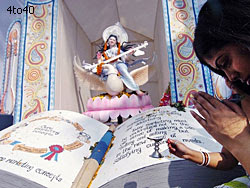
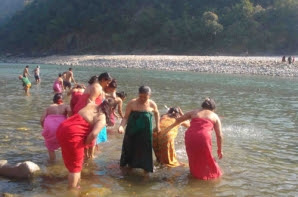

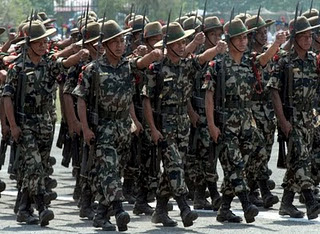







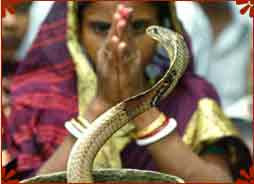










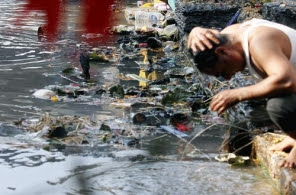
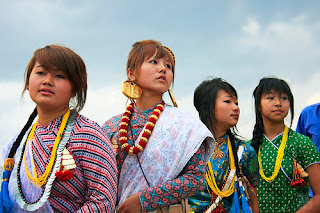


No comments:
Post a Comment